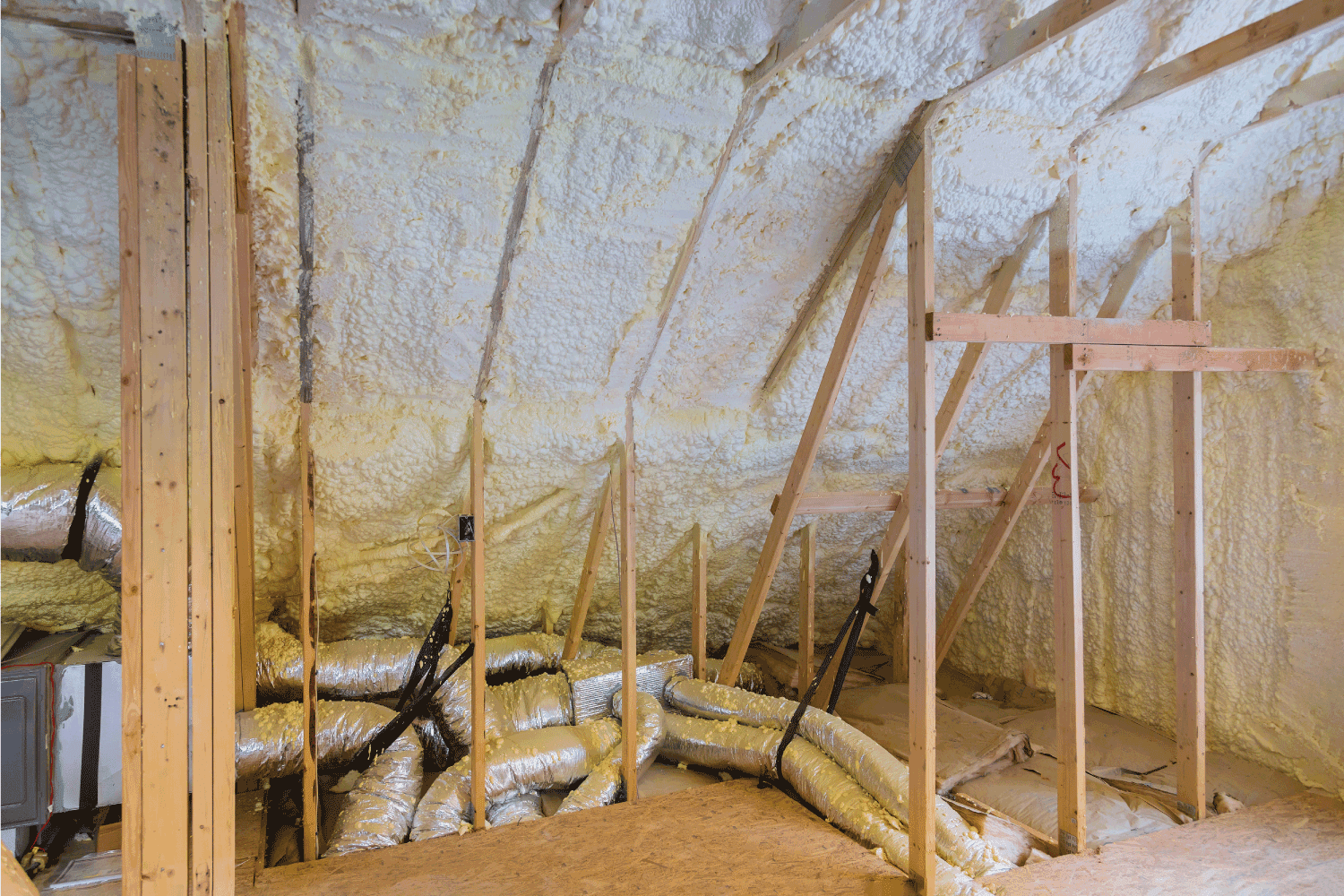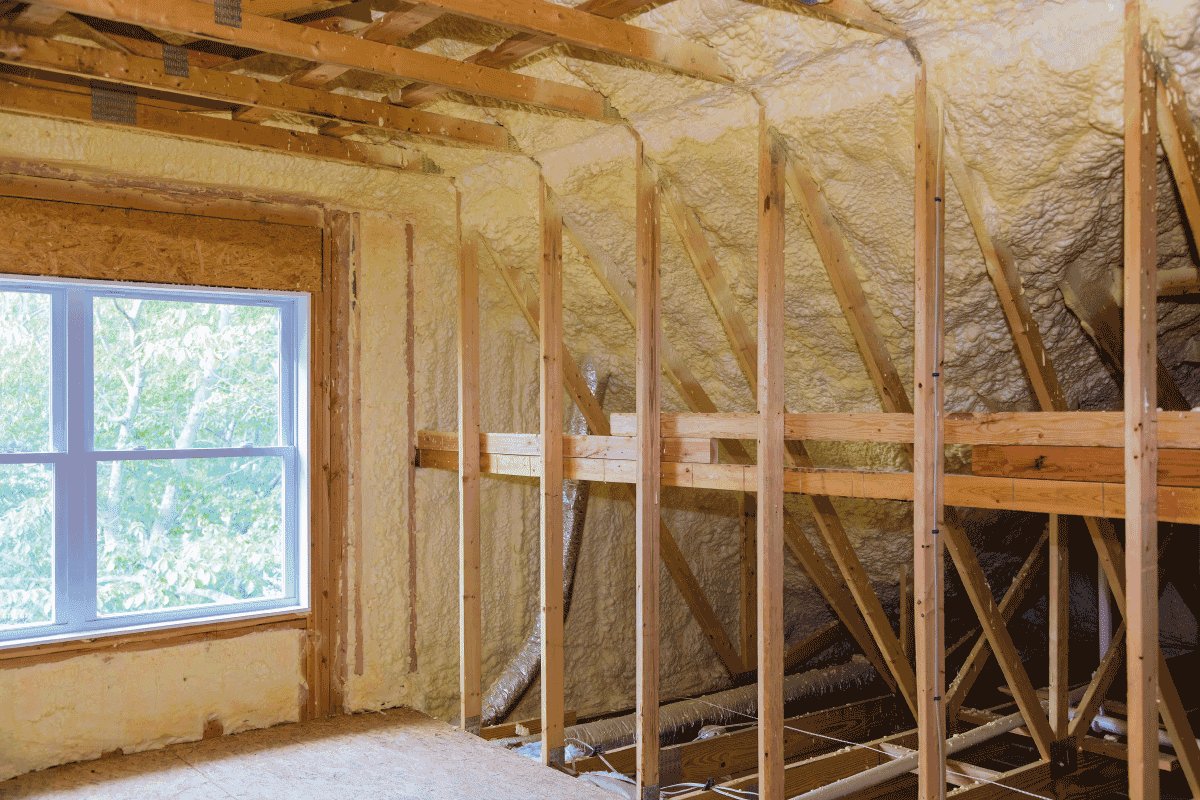Would you like to know if you can blow in mineral wool insulation? Well, we have researched this topic and have answers for you. Understanding whether or not you can blow in mineral wool insulation will allow you to properly install your insulation and avoid safety risks that come with improper installation.
Mineral wool insulation can be blown-in. To do this, you will need a blow-in insulation blower and proper safety equipment. It also comes in batts, which come in rolls or precut bricks.
In this article, we will learn if you can blow in mineral wool insulation. We will also learn if mineral wool requires a vapor barrier, if mineral wool and rockwool are the same, and answers to other related questions. If this piques your interest, keep reading to learn more.

Can You Blow In Mineral Wool Insulation?
Mineral wool insulation is loose-fill insulation, which means that it is made of tiny particles. Because of this, it can be blown in. Blown-in insulation is commonly used to fill existing areas, attics, and places that may be difficult to reach when insulating.
However, because installing mineral wool using the blown-in method requires a particular machine and can be hazardous to health if breathed in, many people opt to have professionals install it rather than doing it themselves. People who choose to install it themselves by hand use batts, which are precut bricks or rolls of insulation.

What Do I Need To Get Started?
Before starting your project, you will want to be sure you have all the necessary tools and materials. You will need a blower, hose, caulk gun, insulation, expanding foam, vent chutes, hose, stapler, trouble light, and utility knife. In addition to those things, you will also want a measuring tape and a permanent marker to mark your measurements.
You will need a dust mask, flashlight, leather gloves, safety glasses, knee pads, and clothing covers for safety reasons. You will also need a second person to help operate the machine properly.
For most one-time projects, renting the machine is preferred over buying it. You can usually find the blow-in machines for rent at home improvement stores or rental yards. The price depends on where you rent it from and how long you rent it, but it usually costs between $40 to $1600.
How Do You Blow In Mineral Wool Insulation?
The first step is to prepare your area. Remove damaged insulation, repair or add vent chutes as needed, and use the caulk gun to fix any leaks. Then, measure up from the drywall to mark how deep you want your insulation. Do this every few trusses to ensure you cover the whole area evenly.
Once your area is prepared, you and your helper should put on your protective equipment and plug in your machine. The person operating the hose will spray the insulation into place, and the second person will be putting the insulation into the machine. This second person needs to ensure the material is getting broken up enough so that the insulation is evenly distributed.
Here is a video on the proper technique for installing loose-fill insulation.
Safety Considerations
Installing insulation can be dangerous if you do not do it properly. So, if you have a large area and are inexperienced, please have a professional do the installation for you.
It can cause health problems such as asthma, rashes, risk of blindness, and other severe conditions. If you put too much, the wrong kind, or too little insulation, you run the risk of starting a fire. On top of these risks, it is also complicated and time-consuming.
Does Mineral Wool Insulation Need A Vapor Barrier?
Mineral wool is dense and water-resistant. Because of this, it doesn't absorb moisture and retains its insulating properties even when wet. So, a vapor barrier is not usually necessary when installing blown-in mineral wool.
Is Mineral Wool The Same As Rockwool?
Many companies use the terms "mineral wool" and "rockwool" interchangeably. This is because they both can be used to accomplish similar tasks. However, they aren't exactly the same thing.
Rockwool is a type of mineral wool that is made of basalt. A second type of mineral wool is called slag wool, made from iron ore waste.
Rockwool is more commonly used in buildings, while slag wool appears more in industrial settings. Therefore, slag wool is considered lower quality and is cheaper than rockwool.

Which Type Of Blown-In Insulation Is Best?
Blown-in insulation has three common types: cellulose, fiberglass, and mineral wool. Cellulose is the most commonly used in houses, but does that make it the best?
When comparing insulation, you have to consider many different qualities, and we will compare them based on the insulation's R-value, weather resistance, and cost. We will also discuss which insulation is best for which locations and which is better for certain climates.
R-Value
R-value measures a material's thermal resistance given a certain thickness. Simply put, it tells you how much heat a material allows to escape through it.
It is recommended to have an R-value between 13 and 60. This value is based on where you live and plan to install the insulation. It is common for batts of insulation to have an R-value of 19.
Fiberglass has the lowest R-value at 2.5 per inch, followed by an R-value of 3.3 for mineral wool. On the other hand, cellulose has the highest R-value of the three at 3.7 per inch. This means it would take almost eight inches of fiberglass and only about five inches of cellulose.
So, cellulose is the best based on R-value. However, there are still more categories to consider.
Weather Resistance
When you put in insulation, you want it to keep your house warm and dry. Therefore, you want insulation that won't get ruined in bad weather or if your pipes spring a leak.
Fiberglass and cellulose do not respond well to water. Even though they are both mold-resistant, mold can grow on them if there is a leak or constant exposure to weather. Water will also lower their R-value, making them less resistant to heat.
Mineral wool, on the other hand, doesn't absorb moisture. Because of this, it will never mold or mildew. Plus, it will not become a worse insulator in the presence of water.
So, mineral wool is a clear winner in this category because it will hold up the best to wet conditions.
Cost
Fiberglass and cellulose insulation typically cost about the same per square foot. You can usually find them for less than a dollar per square foot when buying blown-in insulation.
Mineral wool is more expensive, but not by much. You can expect to spend a little over a dollar per square foot.
So, price-wise, fiberglass and cellulose are more budget-friendly, if only by a hair.

Location
Blown-in insulation is suitable for attics, walls, and oddly shaped areas. While you can use all three insulators in the same places, some of them are better suited for specific projects than others.
Mineral wool works best for exterior applications and heated crawl spaces. It is incredibly dense and can be challenging to use in ceilings because of this density.
Fiberglass is more flexible, making it easier to use in oddly shaped areas than mineral wool. It also works well for attics and garages.
Cellulose tends to work best for areas that need insulation but when you don't have time to open up your wall. It is flexible like fiberglass but more environmentally friendly.
Climate
When insulating your home, consider the climate you live in. Fiberglass insulation prevents heat from building up when the weather is hot but won't keep your house as warm as cellulose will.
Cellulose is recommended in climates that get incredibly cold during certain times of the year because it is fantastic at holding in the heat. However, this makes it less effective at keeping your home cool if you experience heat waves throughout the year.
If you live in a tropical climate or an area with higher humidity, mineral wool is your best option. It won't absorb moisture as the other two insulations will.

Final Thoughts
In this article, learned that you can blow in mineral wool insulation. We also learned that blown-in mineral wool insulation does not need a vapor barrier and that rockwool is a type of mineral wool.
We hope you enjoyed this article. If you found it informative, check out some of these other posts.
How To Install Mineral Wool Insulation In Ceiling [A Complete Guide]
